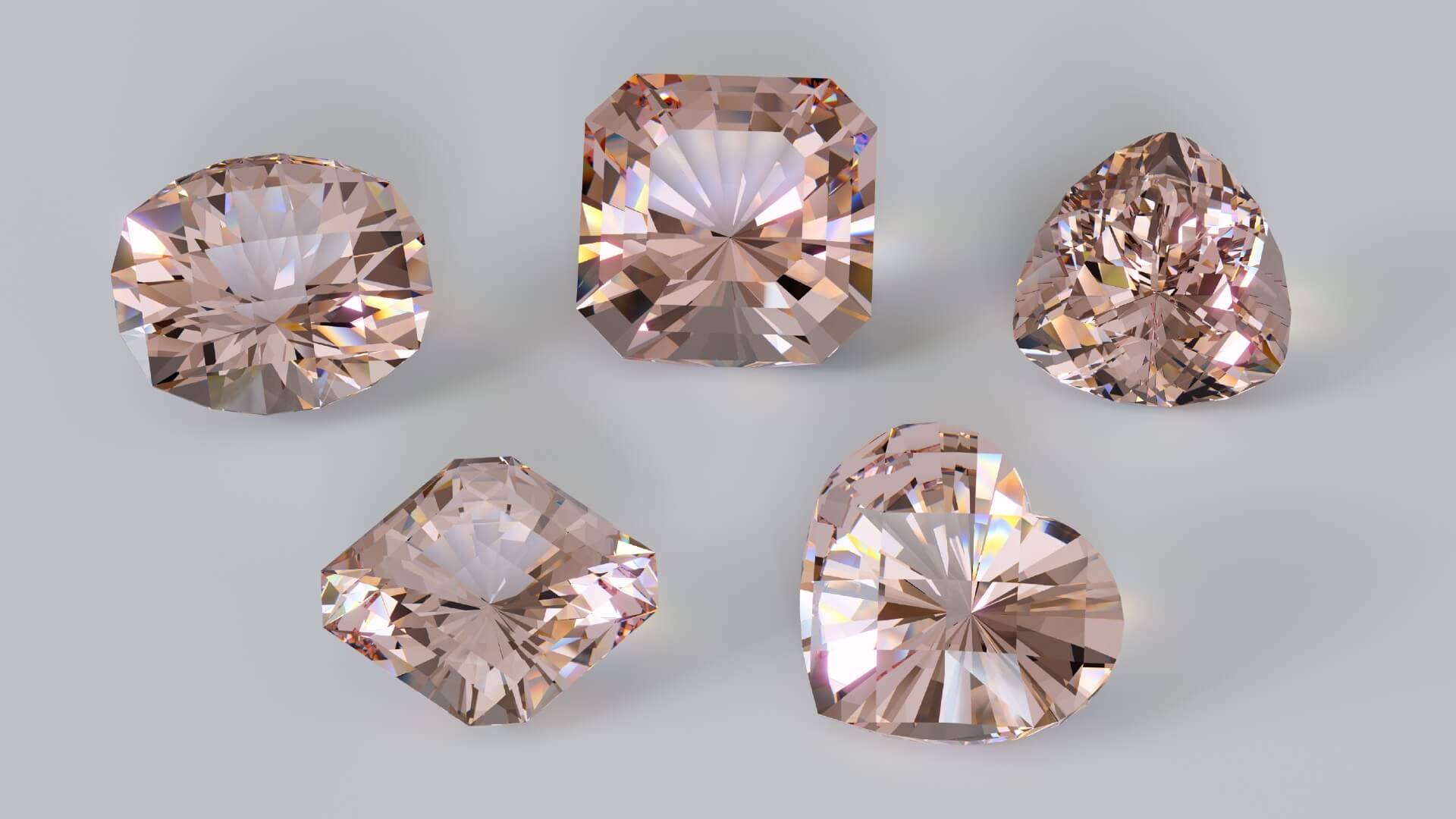Introduction to Diamond Substitutes
So, you’re thinking about getting a diamond substitute? Maybe you’re looking for something that looks just as stunning but comes at a friendlier price, or perhaps you’re just curious about what else is out there. Either way, you’re in the right place! In this guide, we’ll explore the world of diamond substitutes, dive into their types, compare their qualities, and give you all the info you need to make an informed choice.
What Are Diamond Substitutes?
Diamond substitutes are materials that mimic the look of diamonds but aren’t actual diamonds. They come in various forms, from gemstones to synthetic materials, each with unique properties and advantages. While they may not be real diamonds, they can still offer sparkle, durability, and beauty.
Why Consider Diamond Substitutes?
Why go for a diamond substitute? Well, there are several compelling reasons. Firstly, budget constraints—diamonds can be pretty pricey, and substitutes often provide a similar aesthetic at a fraction of the cost. Secondly, ethical and environmental concerns—some people prefer substitutes due to the ethical issues surrounding diamond mining. Lastly, if you’re just not a fan of diamonds, substitutes offer a range of options to suit different tastes and styles.
Types of Diamond Substitutes
Moissanite
What is Moissanite?
Moissanite is a gemstone that was first discovered in a meteorite crater. It’s made of silicon carbide and has a sparkle that’s often compared to diamonds. In fact, its brilliance can sometimes outshine a diamond due to its higher refractive index.
Moissanite vs. Diamonds
So how does moissanite stack up against diamonds? For one, moissanite is generally more affordable. It’s also incredibly durable, scoring a 9.25 on the Mohs hardness scale (diamonds score a 10). Visually, moissanite has a distinct sparkle that some people love, though others might find it too fiery compared to the more subdued sparkle of diamonds.
Cubic Zirconia (CZ)
What is Cubic Zirconia?
Cubic zirconia is a synthetic gemstone made from zirconium dioxide. It’s often used in jewelry as a diamond substitute because it closely resembles diamonds in appearance. CZ can be produced in various colors, but the most common is clear, mimicking the look of a diamond.
CZ vs. Diamonds
CZ is much less expensive than diamonds and can be produced in large quantities. However, it’s less durable, scoring about 8-8.5 on the Mohs scale. Over time, CZ can also lose its sparkle due to scratching and clouding, which means it may require more frequent replacement compared to diamonds.
Synthetic Diamonds
What Are Synthetic Diamonds?
Synthetic diamonds, also known as lab-grown diamonds, are real diamonds but created in a lab rather than mined from the earth. They have the same physical and chemical properties as natural diamonds but are often more affordable due to the controlled production environment.
Synthetic Diamonds vs. Natural Diamonds
The primary difference between synthetic and natural diamonds is their origin. While synthetic diamonds are created in a lab, natural diamonds form over millions of years deep within the Earth. Both types of diamonds are chemically identical, but some people prefer natural diamonds for their unique, natural origin.
White Sapphire
What is White Sapphire?
White sapphires are natural gemstones that are colorless or near-colorless. They are often used as an alternative to diamonds in engagement rings and other jewelry. White sapphires are a good option if you’re looking for a gemstone with a similar appearance to diamonds but at a lower cost.
Lab grown diamonds are a marvel of modern science, offering an ethical and eco-friendly alternative to traditional mined diamonds. Created using advanced technology, these diamonds replicate the natural conditions under which diamonds form, resulting in stones that are chemically, physically, and optically identical to their natural counterparts.
White Sapphire vs. Diamonds
White sapphires are generally less sparkly than diamonds, as they don’t have the same brilliance and fire. They’re also less hard, scoring about 9 on the Mohs scale compared to diamonds’ 10. However, white sapphires are durable and can be a great choice if you’re looking for something that’s not a diamond but still elegant and long-lasting.
Factors to Consider When Choosing a Substitute
Budget
One of the biggest factors in choosing a diamond substitute is your budget. Moissanite and CZ are typically more affordable than diamonds, while synthetic diamonds may be closer in price to natural diamonds. Determine how much you’re willing to spend and choose a substitute that fits within that budget.
Durability
Consider how often you’ll wear the piece and what activities you’ll be doing. If you need something that can withstand everyday wear and tear, moissanite or synthetic diamonds might be better choices due to their durability. CZ, while beautiful, is less durable and may require more frequent replacement.
Appearance
The appearance of your diamond substitute can vary based on the material. Moissanite has a different sparkle compared to diamonds, while white sapphires offer a more subdued brilliance. Think about what kind of look you’re going for and choose a substitute that matches your style.
How to Care for Your Diamond Substitute
Cleaning Tips
Different substitutes require different cleaning methods. Moissanite and synthetic diamonds can be cleaned with a gentle soap solution and a soft brush. CZ and white sapphires can be cleaned similarly but might need more frequent cleaning to maintain their appearance.
Storage Tips
Store your diamond substitute in a soft cloth pouch or a jewelry box to prevent scratches. Avoid exposing your jewelry to harsh chemicals or extreme temperatures, which can damage the material over time.
Conclusion
Choosing a diamond substitute can be a fun and rewarding process, offering you a range of options that suit your style, budget, and ethical preferences. Whether you opt for the brilliant sparkle of moissanite, the affordability of CZ, the real diamond allure of synthetic diamonds, or the understated elegance of white sapphire, there’s a perfect choice for you. By understanding the pros and cons of each substitute, you can find a beautiful and lasting option that meets your needs and preferences. Happy jewelry hunting!





